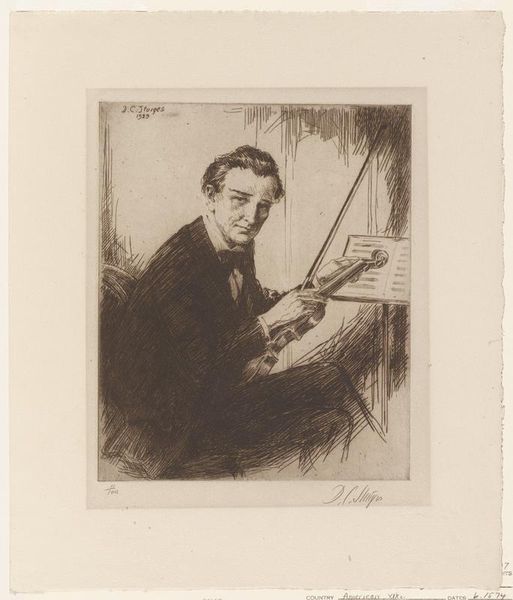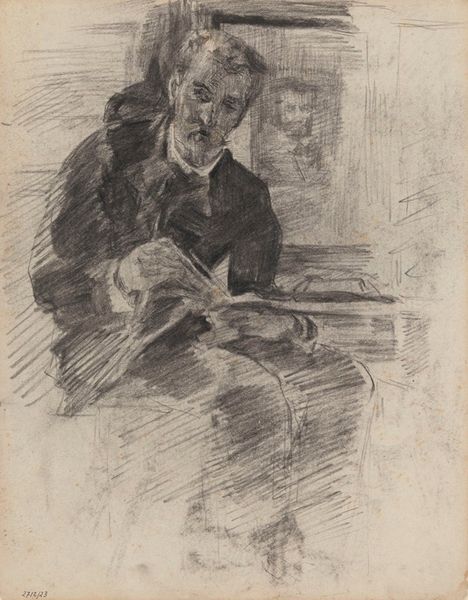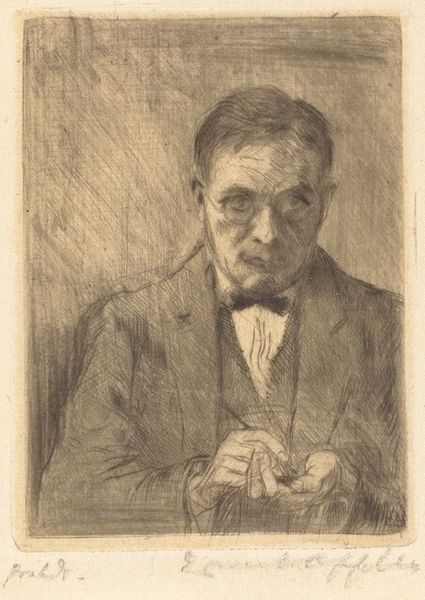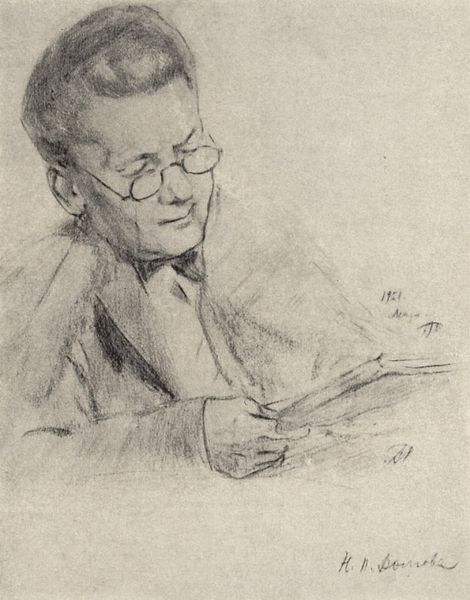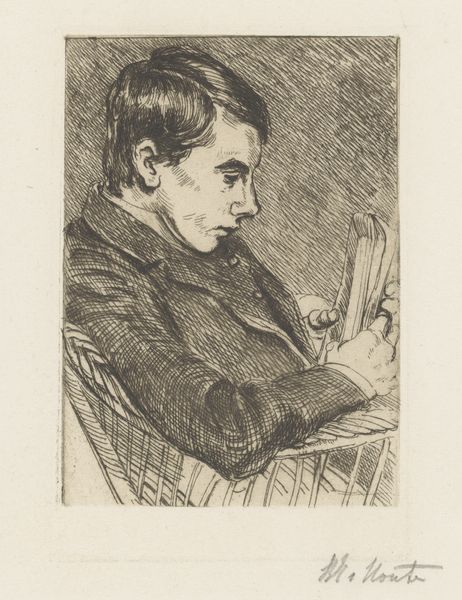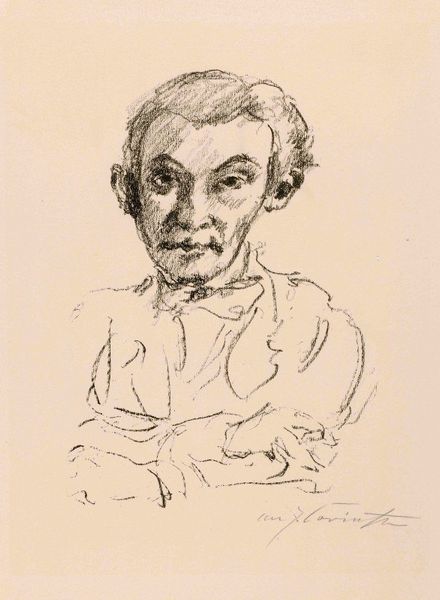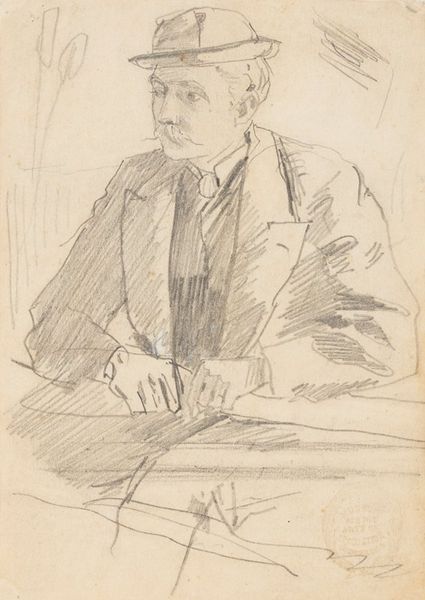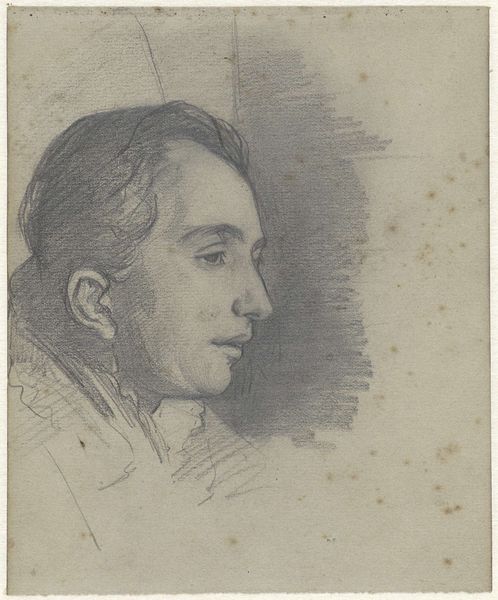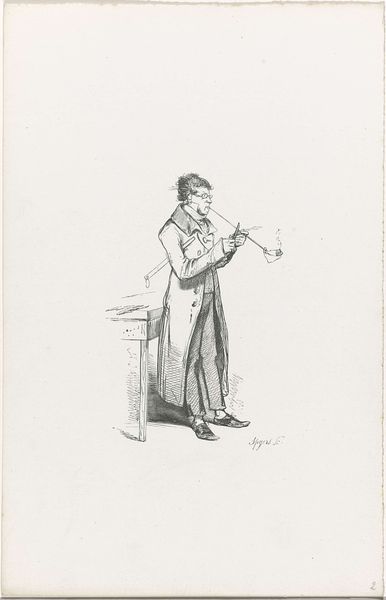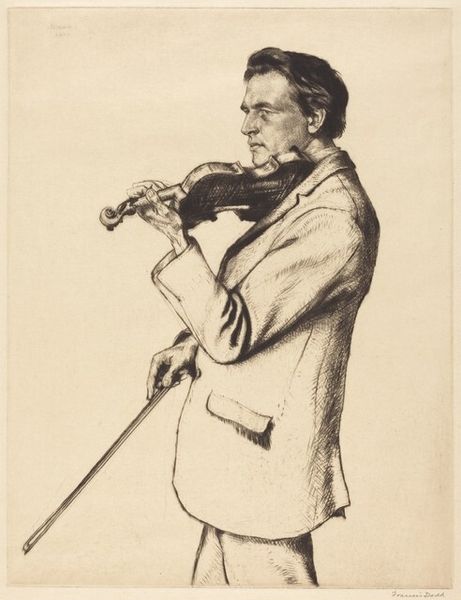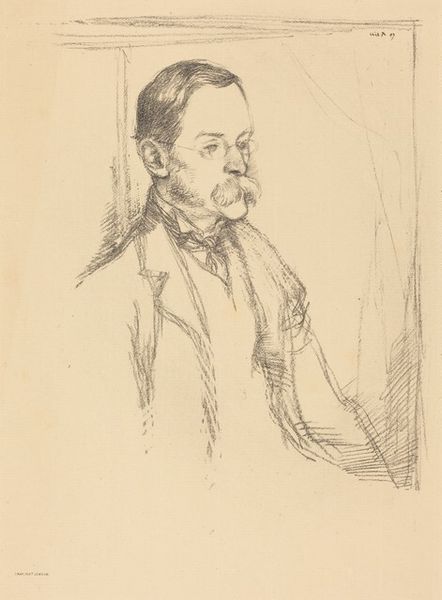
drawing, print, etching, graphite
#
portrait
#
pencil drawn
#
drawing
# print
#
etching
#
pencil sketch
#
pencil drawing
#
line
#
graphite
#
portrait drawing
#
modernism
Copyright: National Gallery of Art: CC0 1.0
Curator: Alright, so first impressions, what do you make of this drawing, “The Violinist,” etched by Dwight Case Sturges in 1929? Editor: Intimate, yet a bit melancholic. It's a cozy domestic scene threatened by an impending darkness, maybe a personal or collective unease reflected by the subject's intense stare. The detail on the face draws me right in. Curator: Exactly! Sturges really captured a pensive mood. It's striking how much emotion he conveys with such simple lines, don't you think? Technically speaking, he’s achieved this effect through detailed cross-hatching and delicate, single strokes. The medium is print work, in graphite, so the softness of the subject is nicely played against the harsher lines behind him, emphasizing the modernity and isolation of the individual. Editor: Absolutely. And seeing that it’s a portrait of a white man in formal attire holding a violin – an object of cultural capital – it inevitably calls to mind notions of class and privilege. The loose style juxtaposes interestingly against that traditional image; Sturges is definitely toying with expectation. Is there a sense that this man belongs to a generation destined for ruin, like those decadent, out-of-touch upper classes targeted by revolutions throughout Europe, for example? I wonder how his work reflects these tensions. Curator: It is curious how the print gives a somewhat vulnerable feel, despite the clear elegance of the violinist’s position, dress, and surroundings. To me it also speaks about that period after the war – shell-shocked, and finding comfort in music and artistic endeavor – or in what remains of life. The etching and graphite allow a tonal gradient and sensitivity, as the work hovers gently somewhere between definition and disintegration. It’s about memory. The notes look faint, like recollections almost lost. Editor: Mmh, interesting point. Maybe Sturges wasn't overtly political, but the artwork embodies the social climate. It speaks volumes about the privileges afforded to some while the world teetered on the brink. A sense of being suspended in time before another collapse. Curator: I hadn't thought of it that way, but that definitely enriches my understanding of it. He has managed to immortalize a cultural type, maybe. Thanks for sharing that context. Editor: Of course. Art's power lies in its capacity to ignite these dialogues across time.
Comments
No comments
Be the first to comment and join the conversation on the ultimate creative platform.
